Modern technology allows us to supplement our environment with digital elements, this is called augmented reality. Its use allows you to achieve an advantage in sports, business, education, gaming industry and so on.
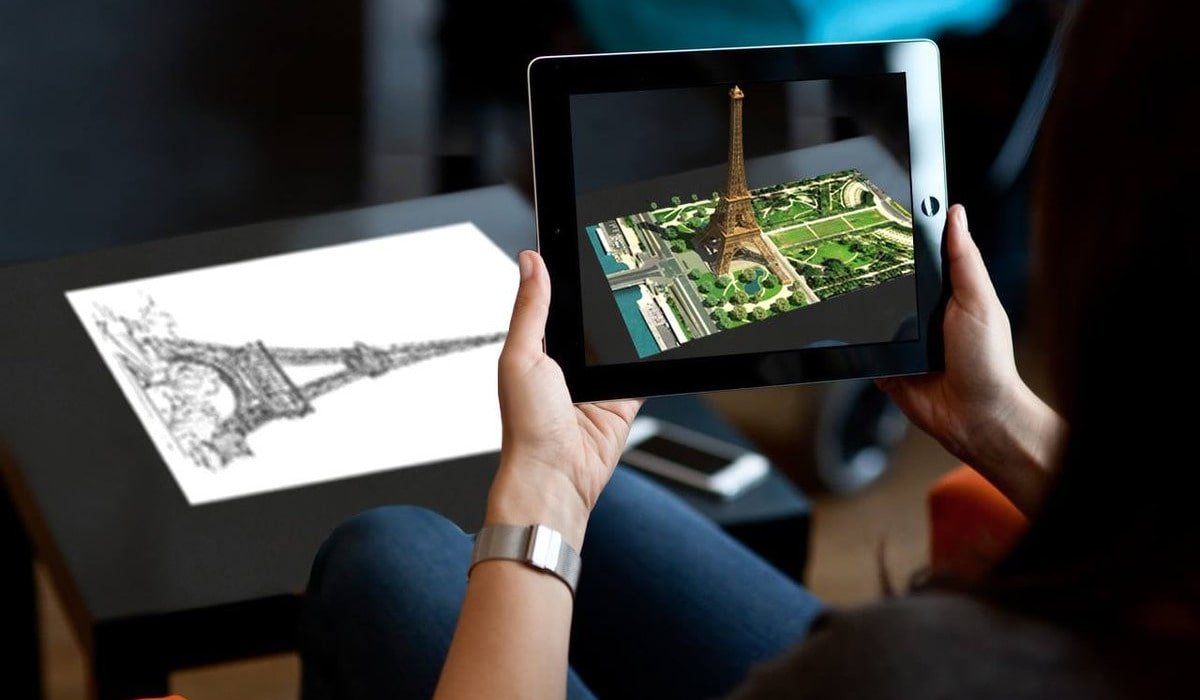
Most often AR works with 3D objects.
In a broad sense, it is information that can be seen in the real world through technology. It has the following manifestations:
- the creation of sounds and images through technology;
- the ability to interact with AR elements;
- a clear distinction between virtual and real components.
For the application of augmented reality can be used both screens of devices and special devices. An example of AR are masks that allow you to change the face in a photo by removing wrinkles or adding dog ears.
Types of augmented reality
At the moment, there are three types of AR:
- Marker-based. The image is built on an "anchor" that stores information. The application base can be extensive, the program shows static and animated images. An example of a marker project is the use of a QR code that overlays an object.
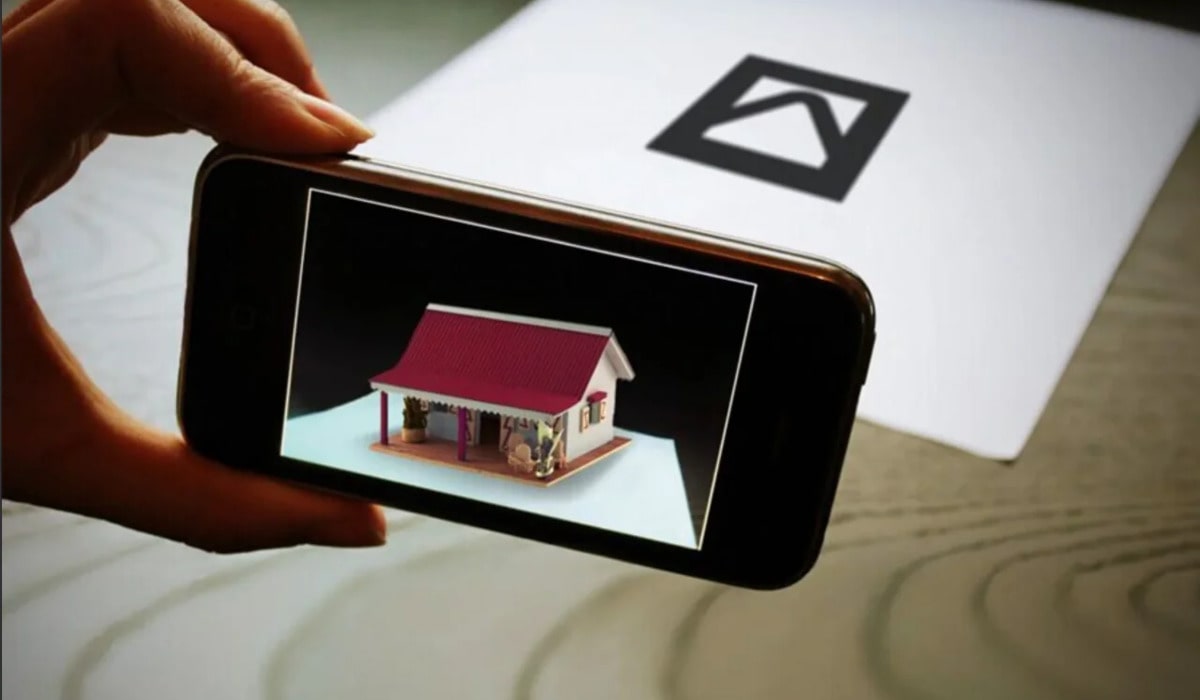
QR code can be used on posters and brochures as well as on printed sheets at home
- Markerless. It is distinguished by the absence of an anchor element. More complicated in execution. Virtual objects appear when reading information from the camera. The technology works with the help of device sensors, data from the camera, etc. An example of anchorless augmented reality is the game Harry Potter: Wizards Unite, in which you need to explore the universe, searching for animals and objects.
- Mixed. Virtual and augmented reality ar vr can be combined with each other.
The use of augmented reality may change in the future, but it all depends on the development of digital technology.
Breaking down the differences between augmented and virtual reality
VR and AR can be confused, as they are somewhat similar to each other. Let's look at what are the main differences between virtual and augmented reality:
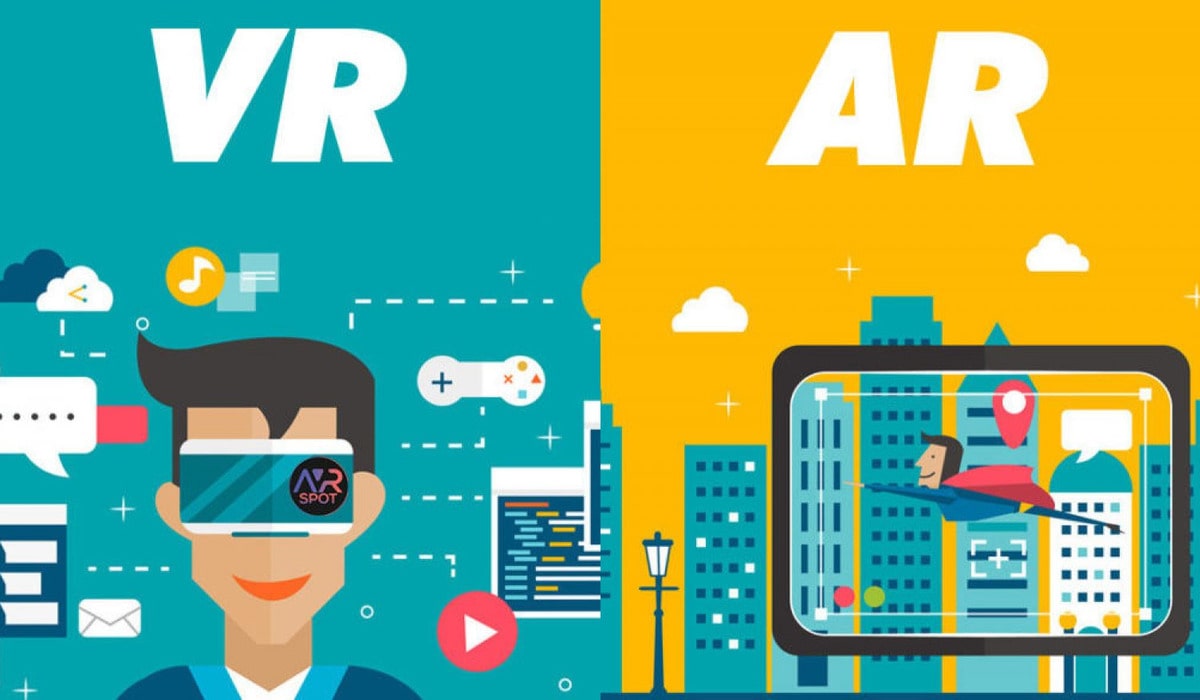
In 2020, the Russian AR and VR market reached 1.4 billion rubles.
To design AR and VR, you need flexible programming languages. JavaScript is one of them, and we will help to master it on the course "Programming in JavaScript", where the child will learn the basics of working with syntax and algorithms.
- Virtual reality is digital. This means that all environments and sounds are modeled with a special device. Augmented reality technology projects digital elements into the real world.
- Virtual reality immerses the user in an artificial world. Augmented reality works with the environment to create digital objects. The key difference between the two environments is the level of immersion (VR has a deeper level of immersion).
- For virtual reality, fully immersive goggles or VR helmets are used. Augmented reality can be seen through these tools as well as through a camera.
How can augmented reality be used?
Spheres of application of augmented reality are numerous, let's consider just a few of them:
- Gaming. With AR, the user interacts with virtual objects in reality. For example, using the smartphone camera, he gets the opportunity to search for objects in the real world. In the past, there was the famous Pokemon Go game, in which Pokemon had to be collected on the street.
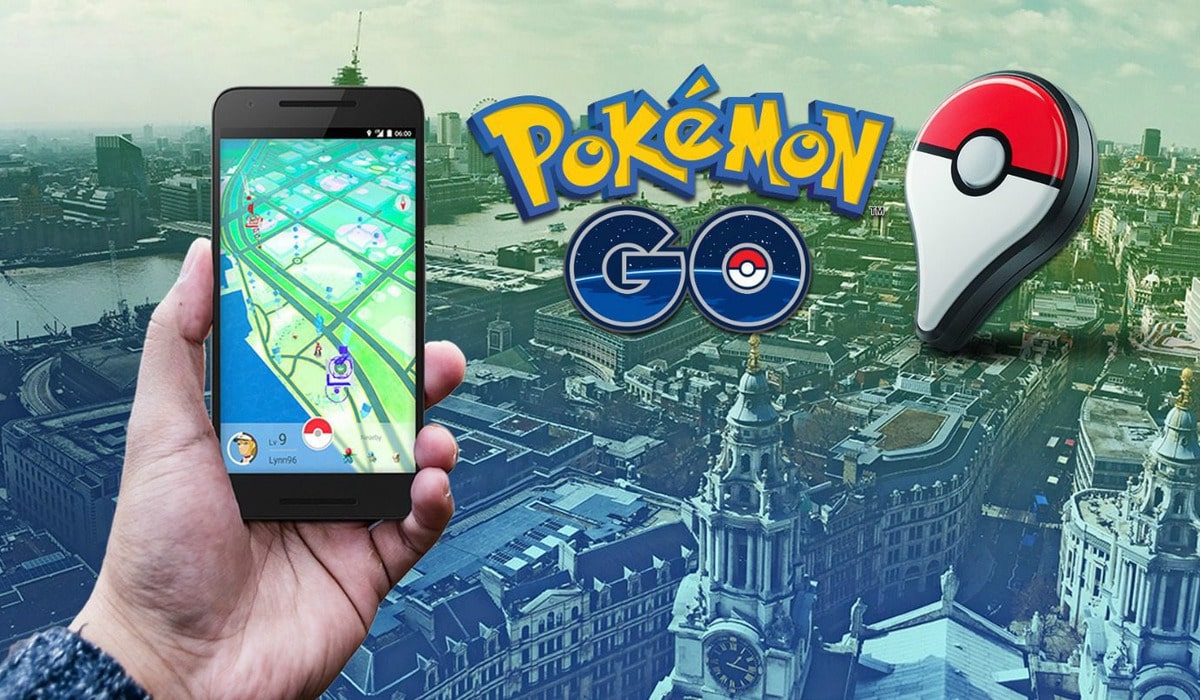
In 2023, the number of Pokemon Go downloads passed 100 million. This shows the promise of AR in mobile gamification.
Education. The formation of 3D objects gives the opportunity to observe useful animations, making learning interactive. In a number of spheres, it became possible to interact with printed materials.
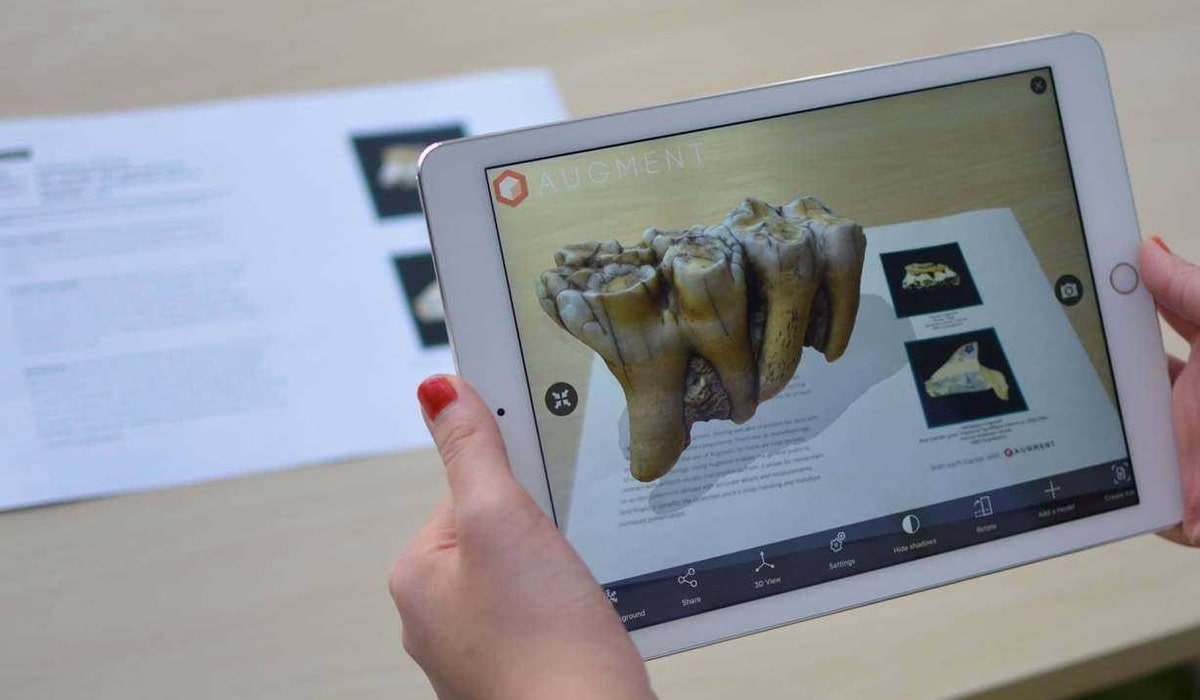
Russian education plans to use AR. This was taken up by the University of Moscow State University, which began to develop textbooks with augmented reality.
Art and recreation. Users can observe virtual installations in real time. For example, they get the opportunity to learn more about various exhibits through the phone's camera.
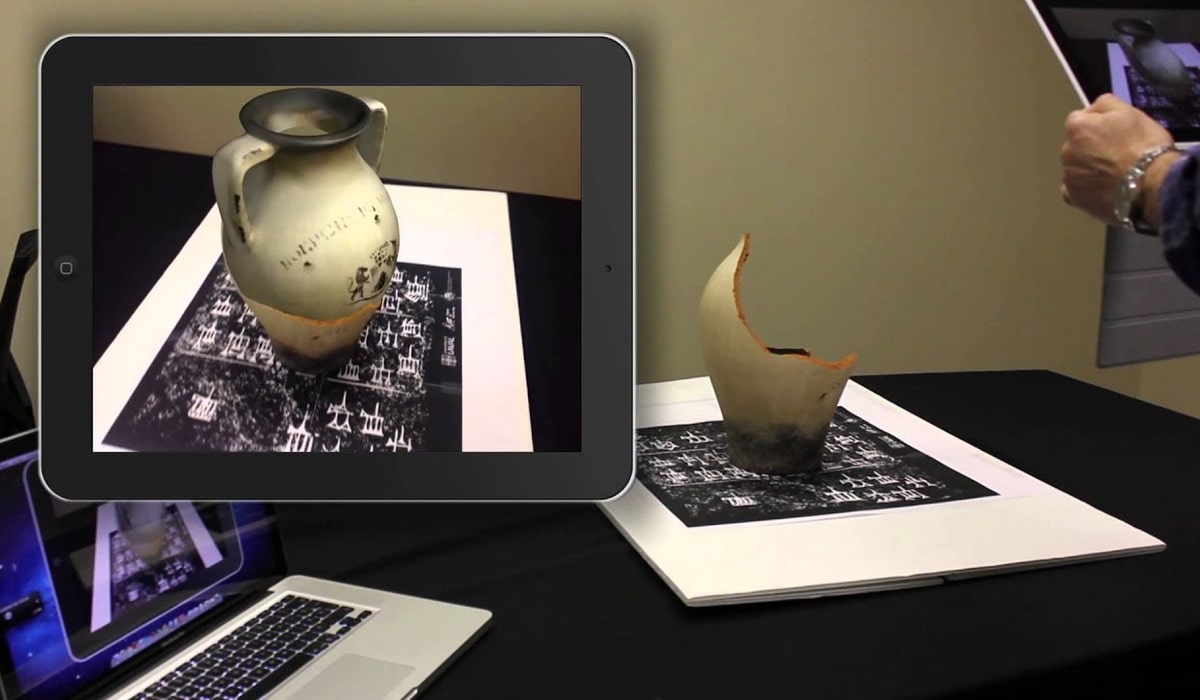
In museums, AR transforms broken finds of the past into a 3D model.
Healthcare. It can be difficult for patients to get to doctors, sometimes getting diagnoses remotely is the only solution available to people who are far away from medical facilities. Augmented reality allows for more detailed recommendations.
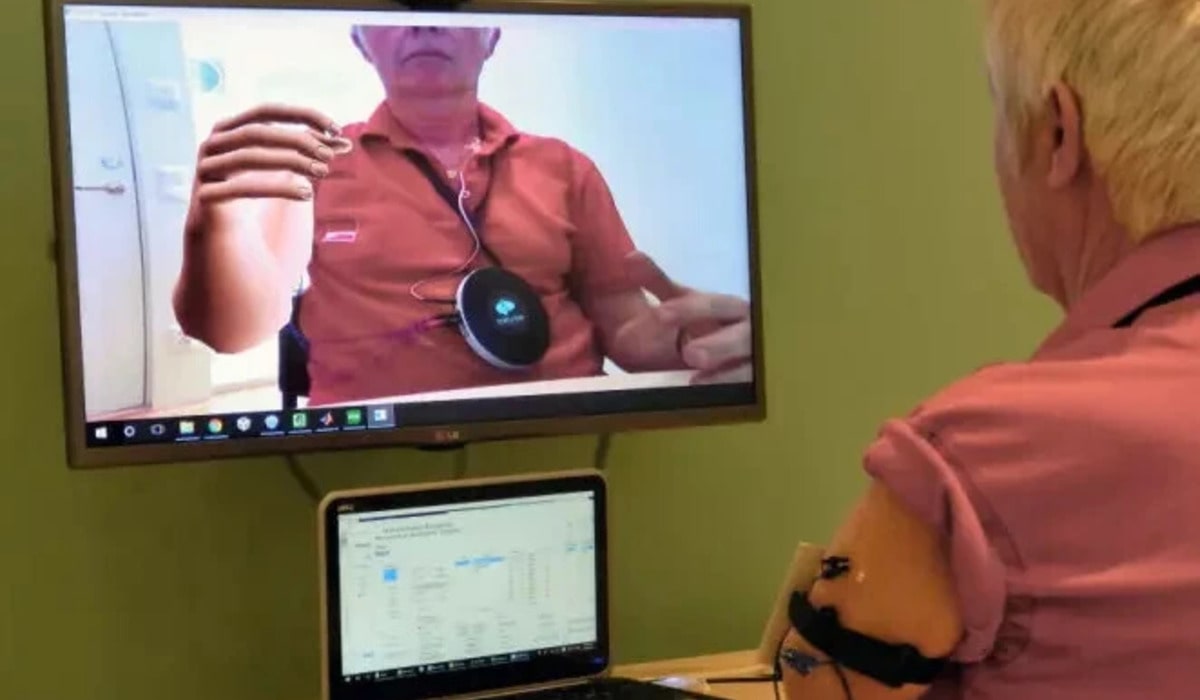
Augmented reality helps with phantom pain.
Tourism. Through AR, digital guides are being created that can provide a route for the user, also using the camera to show the culture of the past. Key locations are equipped with a digital brochure that will highlight information about the site. Another approach that can be used is to lay out full instructions with a map.
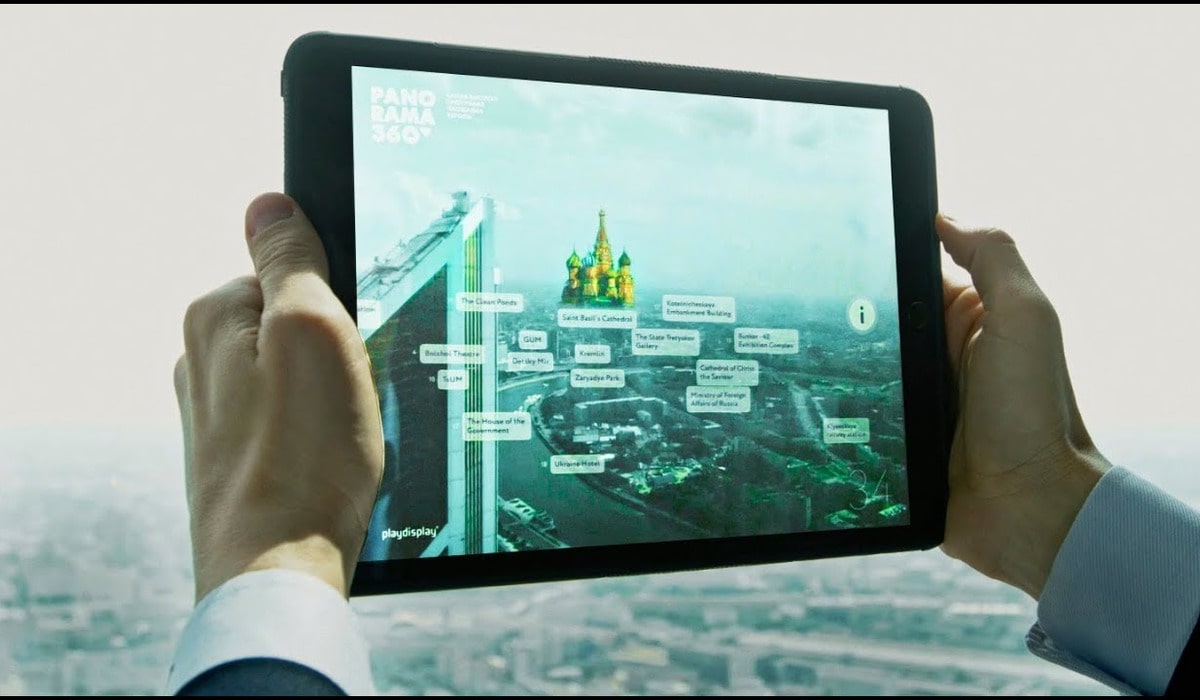
An example of the use of AR in tourism is the Panorama 360 observation deck, which gives the opportunity to familiarize with key sites in Moscow through photos, audio and text.
AR technology is also used in other spheres, for example, in driving training.
And how will business benefit?
Augmented reality is a flexible tool that allows you to customize everything to your own needs. Here are just a few examples of how it can be used:
Retail. It is now possible to find out information about a product using augmented reality. This makes it easier to access reviews, provide useful content, and learn how a purchase will look and work. With the help of such a tool, advertising campaigns are being conducted.
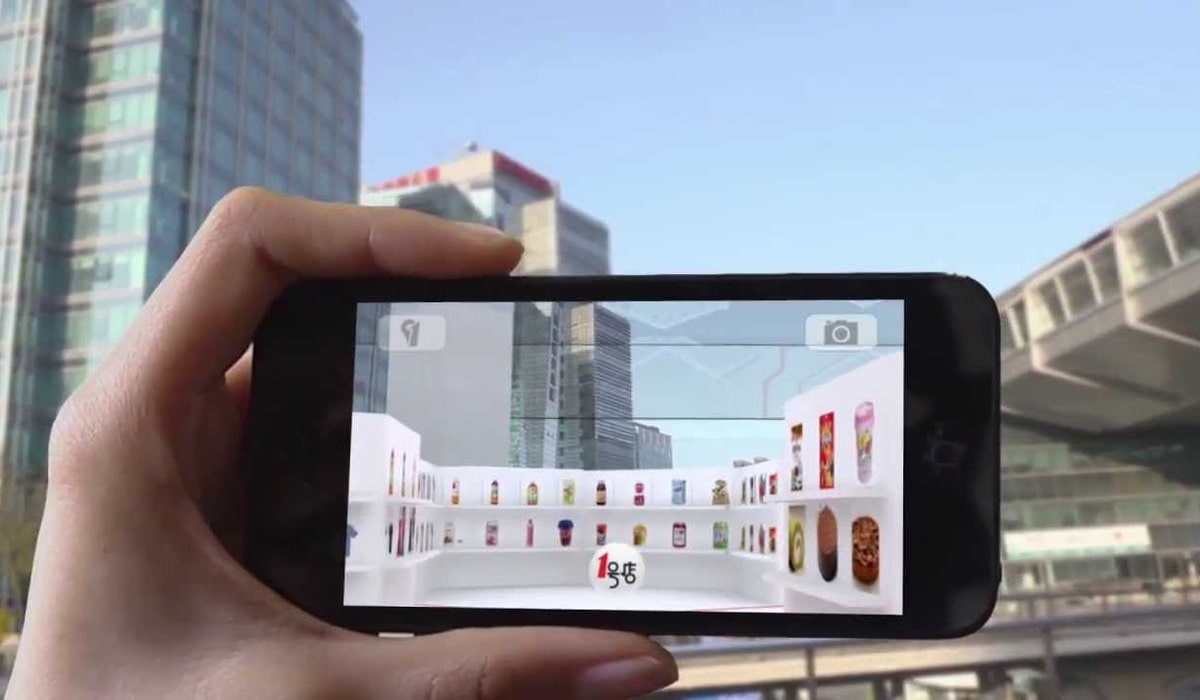
Chinese firm Yihaodian has opened virtual stores across the country. The buyer only needs to select products, which will then be delivered to the home.
Employee training. Interactive instruction is a way to teach a person how to interact with the equipment. The employee will not be able to damage it, but will be trained to use the equipment.
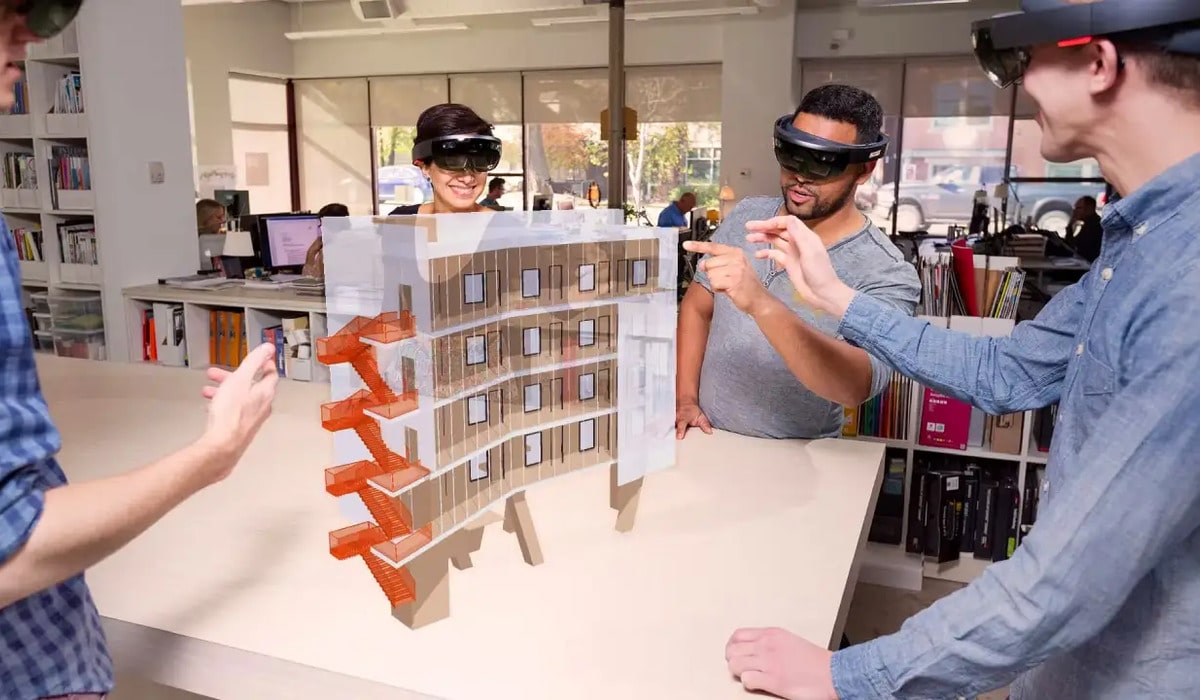
AR is multifunctional, once trained it can be put to work.
Customer Assistance. Applying augmented reality can show the approximate result of future work. For example, there are applications that show the laying of stones for walls. It is enough to point the camera and the program itself will impose the necessary mask.
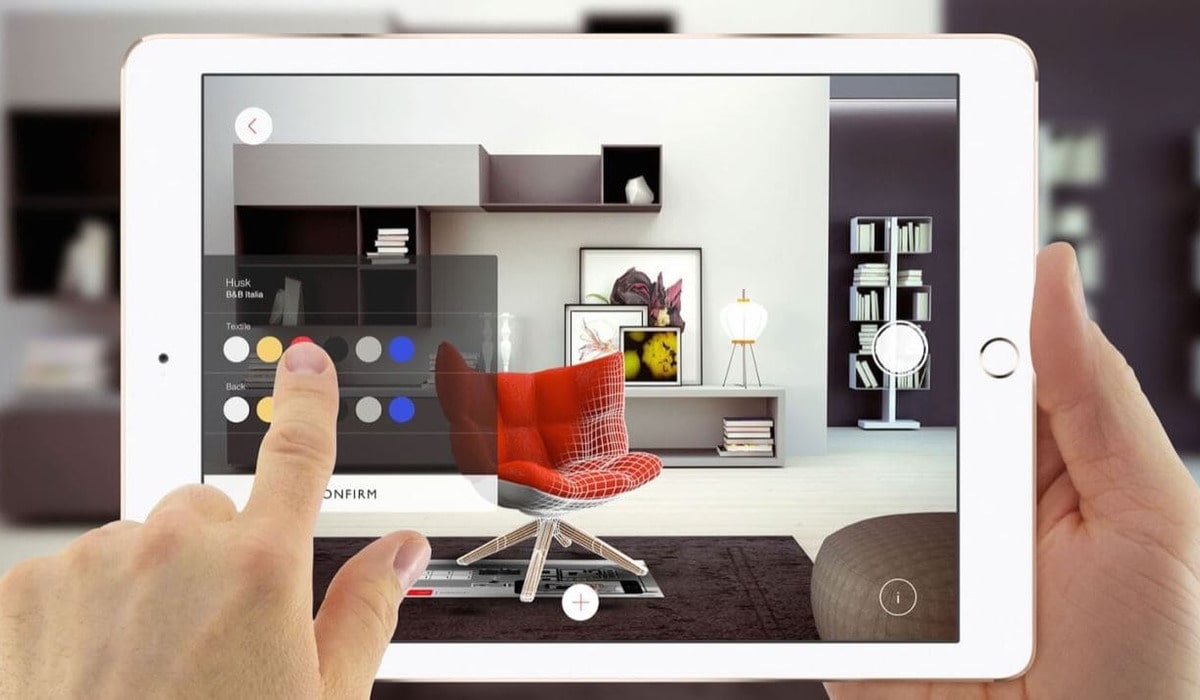
Thanks to AR you can work out the interior of your home in advance.
Advertising campaigns. The boom in the use of augmented reality began in the second half of the twenties. So far, people are not used to it, so they can be surprised by integrated virtual elements. The customer will be able to participate in the promotion with the help of markers. The virtual element is integrated into banners and brochures, as well as places where goods are sold.
Interested in AR development, but don't know where to start? We have prepared a course "Creating AR-applications on Unity3D", which teaches the basics of C# and tells about the principles of creating AR.
The prospects of augmented reality are promising and the scope of their use is expanding.
Augmented Reality - examples of applications from well-known companies
Examples of augmented reality will help you understand how to use this tool for marketing, learning or entertainment:
Google Translator also makes use of this technology. All you have to do is point the camera at the text and it will automatically translate. This feature is able to work without an internet connection.
"Magnet" used this technology for PR, launching a promotion for the movie "Outcast One. Star Wars: Stories." Users could point their screens at markers in stores and see Star Wars characters.
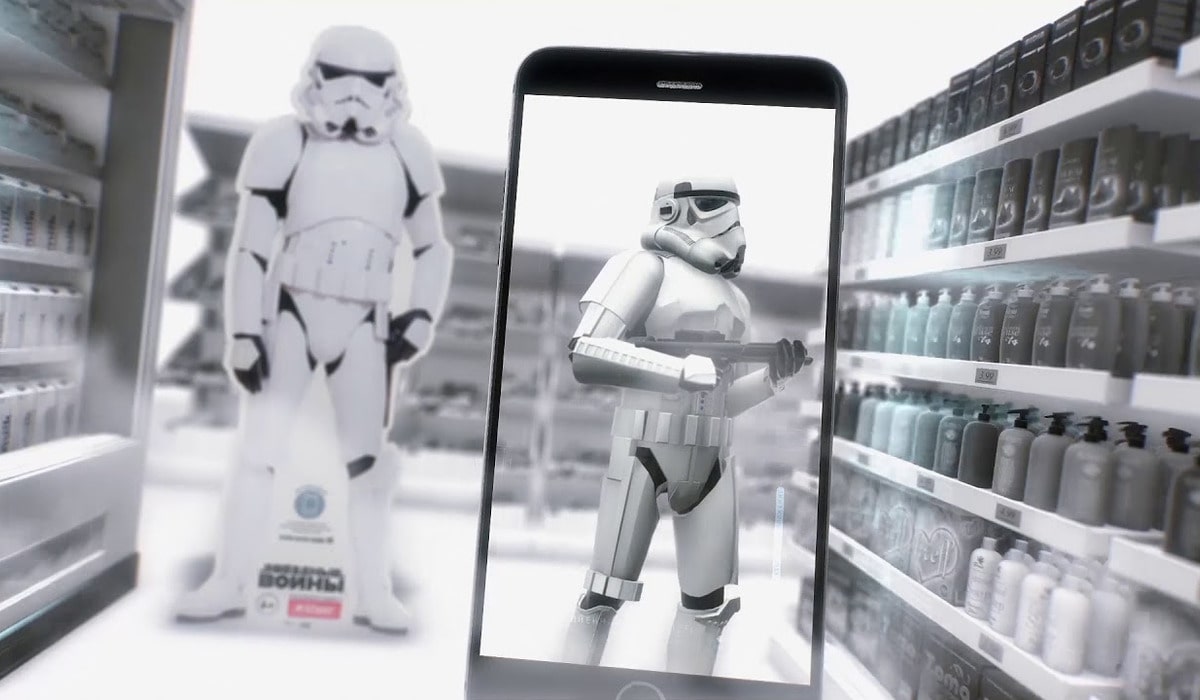
The PR campaign was massive, characters and vehicles could be found in stores, hypermarkets, facades and billboards.
- The augmented reality app Zombies Run makes doing sports more interesting. Instead of images, it used sounds. When a person heard the growls of zombies while jogging, they had to speed up. This app allowed one to search for stashes of supplies and also engage in saving friends.
The company Tissot sells watches, for the convenience of customers it opened a virtual fitting room, where you can try on a new device on your hand. To do this, you had to download a PDF file and an app. The promotion was held in 2010, so users had to cut out the printed image and then try it on their wrist.
Pepsi, along with Shazam, offered customers to scan special signs using Shazam. Users would then gain access to new photo frames. As a result, customers took more than 250,000 photos.
Russian companies have also used augmented reality. In 2017, Goznak released a mobile application "Banknotes 2017". Pointing a smartphone at a banknote the user saw three-dimensional models of banknotes. Also with the help of this application, the banknote could be checked for authenticity.
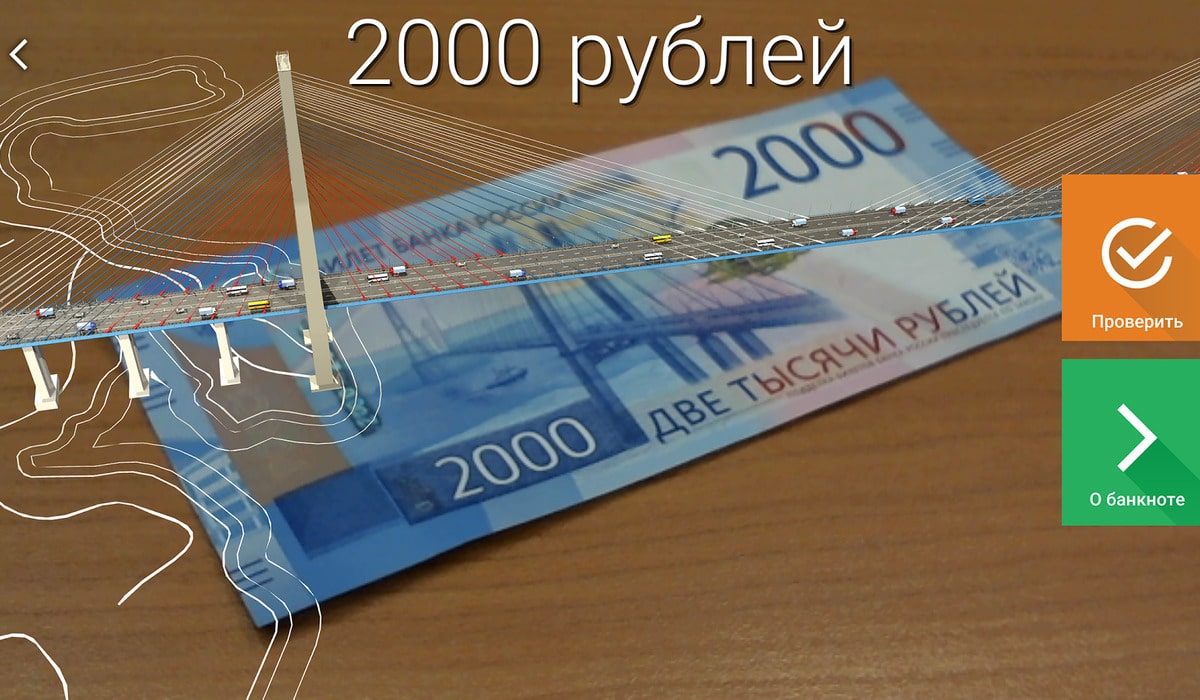
With the help of the project, the population had to familiarize themselves with the 200 and 2000 ruble banknotes.
LEGO has released the LEGO Hidden Side app, in which you have to interact with the constructor to search for ghosts. To do this, one of the sets is used, scanning it triggers a quest related to the search for the otherworldly. The interface shows which creatures have been collected, but you need to purchase all the constructors to maximize interaction.
The use of AR technology will help in business, promoting your project, training, etc. The best advantage is accessibility, due to which everyone can access the functionality using a smartphone. Virtual and augmented reality technologies will continue to develop in the future, allowing us to do away with sensors.





